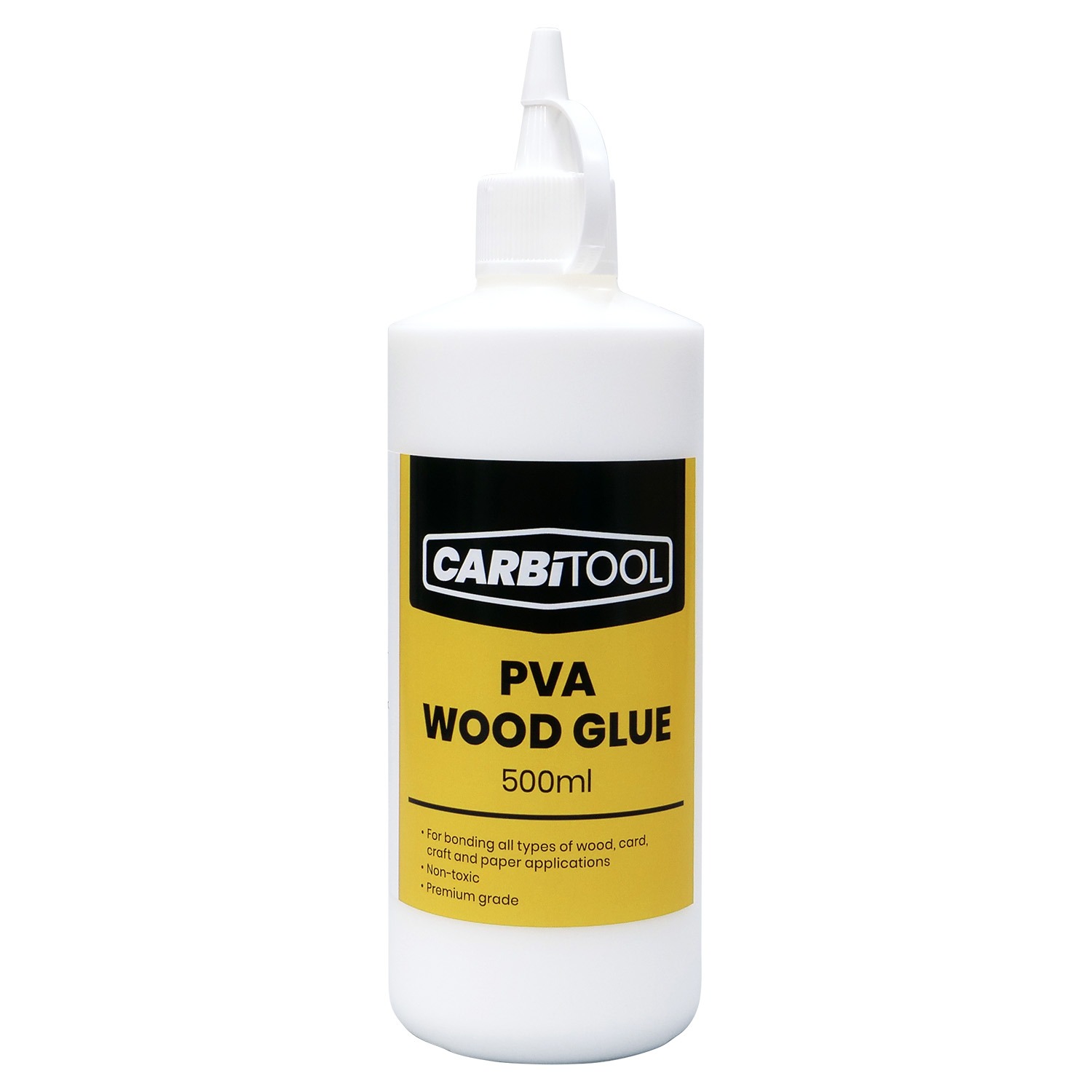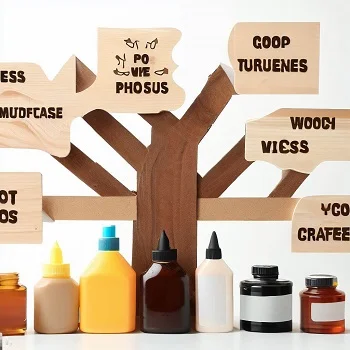Woodworking projects often require strong, long-lasting bonds between wooden parts. Choosing the right wood glue for the job is key to creating joints that stand the test of time. With so many types of wood glue on the market, it can be tricky to know which one is best for your needs. This guide breaks down the most common wood glues, when to use each type, and tips for applying them successfully.
PVA Wood Glue

Polyvinyl acetate (PVA) glue, also known as white glue or carpenter's glue, is the most popular choice for indoor woodworking. PVA glues are water-based, non-toxic, and provide a strong bond for porous materials like wood.
PVA glues have a thick consistency and long open time, meaning you have more time to reposition joints before the glue sets. The glue dries transparent and hardens as it cures over several hours. This makes PVA a good all-purpose wood glue for projects like furniture, cabinets, crafts, and DIY renovations. It works especially well for joining end grain to end grain.
The downside is that PVA glues can break down upon prolonged exposure to moisture. Avoid using them for outdoor projects or items that will come into contact with water.
Tips for Using PVA Glue
- Apply the glue evenly to both surfaces of the joint. Too little glue will weaken the bond.
- Let the glue tack up for 2-5 minutes before joining the pieces. This allows some of the moisture to evaporate.
- Use clamps or pressure to create a tight joint as the glue dries.
- Wipe away any excess glue with a damp cloth before it dries.
- Allow the finished piece to cure for 24 hours before sanding or finishing.
Polyurethane Glue

Polyurethane glues expand as they cure, allowing them to fill gaps between materials. The result is an incredibly strong, waterproof bond. For this reason, polyurethane glue is ideal for outdoor projects like decks, picnic tables, and outdoor furniture.
Gorilla Glue is a well-known brand of polyurethane glue. It has a thick, syrupy texture similar to PVA glue. The working time is only about 10-15 minutes, so you need to work quickly when applying it. Be sure to clamp the joints tightly until the glue cures.
While the bond is incredibly strong, polyurethane glue foams as it cures. The excess has to be sanded or cut away after drying. Use this glue sparingly to avoid too much glue squeeze-out. Wiping away excess glue while wet can help minimize sanding later.
Tips for Using Polyurethane Glue
- Apply the glue carefully to avoid squeeze-out.
- Clamp joints tightly within 10-15 minutes.
- Allow 24 hours for the glue to fully cure before sanding away dried excess glue.
- Since it won't accept stain, take care not to get polyurethane glue on surfaces that will be stained.
Epoxy
Two-part epoxy glues create an extremely durable, waterproof bond. Epoxies are the strongest glues for wood. The resin and hardener must be mixed in equal parts immediately before use.
Epoxy is great for:
- Outdoor furniture - It stands up to sun, rain, and temperature changes.
- River tables and bar tops - Liquids won't deteriorate an epoxy finish.
- Filling cracks and knots in wood - The glue won't shrink as it dries.
However, epoxy has a much longer cure time. Most brands take 16-72 hours to fully harden and reach maximum strength. The glue is also more difficult to apply since you must mix the two parts. Proper mixing technique helps prevent uncured spots.
Tips for Using Epoxy
- Prepare your work area ahead of time. Epoxy cures quickly once mixed.
- Mix equal parts resin and hardener thoroughly for 2-3 minutes.
- Apply epoxy glue immediately once mixed for maximum working time.
- Use heavy objects or clamps to apply constant pressure as it cures.
- Allow several days for epoxy glue to fully cure before stressing the bond.
Cyanoacrylate Glue
Cyanoacrylate, better known as super glue, offers incredibly fast drying time. A little bit of super glue is perfect for quickly bonding:
- Small project parts
- Inlays and veneers
- Dowels and joinery
However, super glue creates a relatively brittle bond. It's not suitable for load bearing joints. The fumes released as cyanoacrylate glue cures can also irritate eyes and skin. Work in a well-ventilated area and avoid inhaling fumes.
Tips for Using Cyanoacrylate Glue
- A little glue goes a long way. Use only a small amount.
- Apply to one surface only. Spreading it on both parts will make the glue cure too quickly.
- Bond parts together immediately after applying glue.
- Allow at least 30 minutes for super glue to fully cure before handling.
- Wear gloves and eye protection when working with cyanoacrylate.
Hide Glue
Hide glue is made from animal collagen. It's water-soluble and creates a reversible bond, allowing joints to be taken apart later. The moderate tack time and drying time of hide glue makes it a good choice for intricate wood joinery and instrument making.
However, hide glue has low moisture resistance. It's mainly used for indoor furniture projects. The glue must also be heated before use and has a short shelf life. Hide glue is a specialty adhesive that takes some practice to master.
Tips for Using Hide Glue
- Heat the glue in a double boiler slowly to avoid scorching it.
- Test consistency and tack time on scrap wood first.
- Apply warm glue to both surfaces and assemble joints immediately.
- Use enough pressure to squeeze a thin glue line from the joint.
- Allow 8-10 hours for hide glue to fully cure.
Choosing the Right Wood Glue
With so many options, choosing the right glue may seem confusing. Just remember:
- Use white PVA glue for indoor projects like furniture and crafts.
- Choose polyurethane glue for outdoor projects that need waterproof durability.
- Epoxy creates the strongest bond but has a long cure time. It's great for filling gaps.
- Opt for super glue when you need to work fast bonding small parts.
- Use hide glue for historically accurate wood joinery techniques.
Test different glues on scrap pieces of wood to see which you like working with. Consider the weaknesses and strengths of each type of glue for your project. With the right adhesive, you can create durable, long-lasting woodwork.


No comments yet